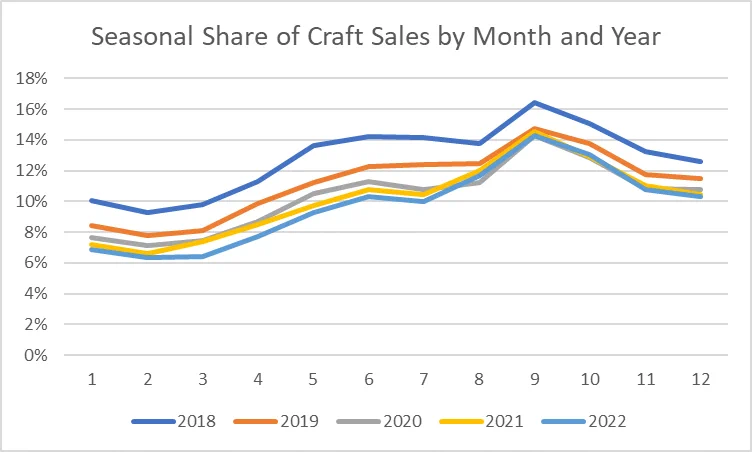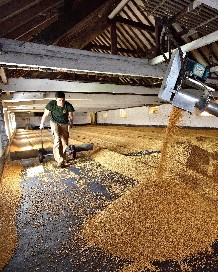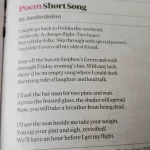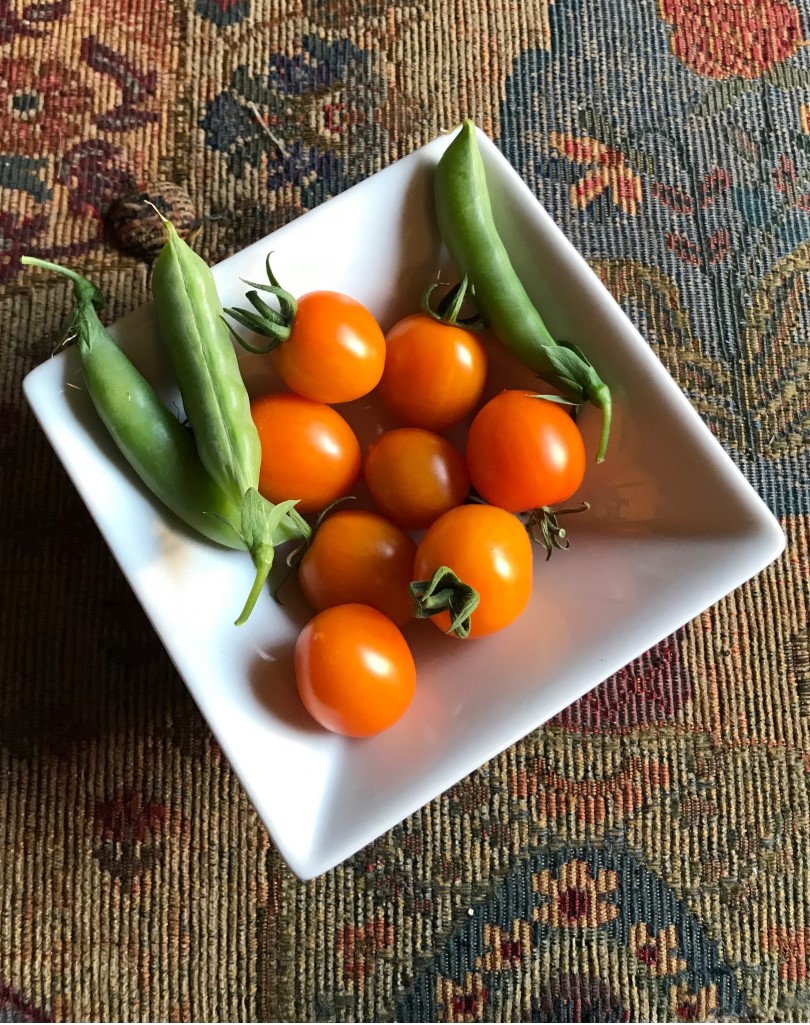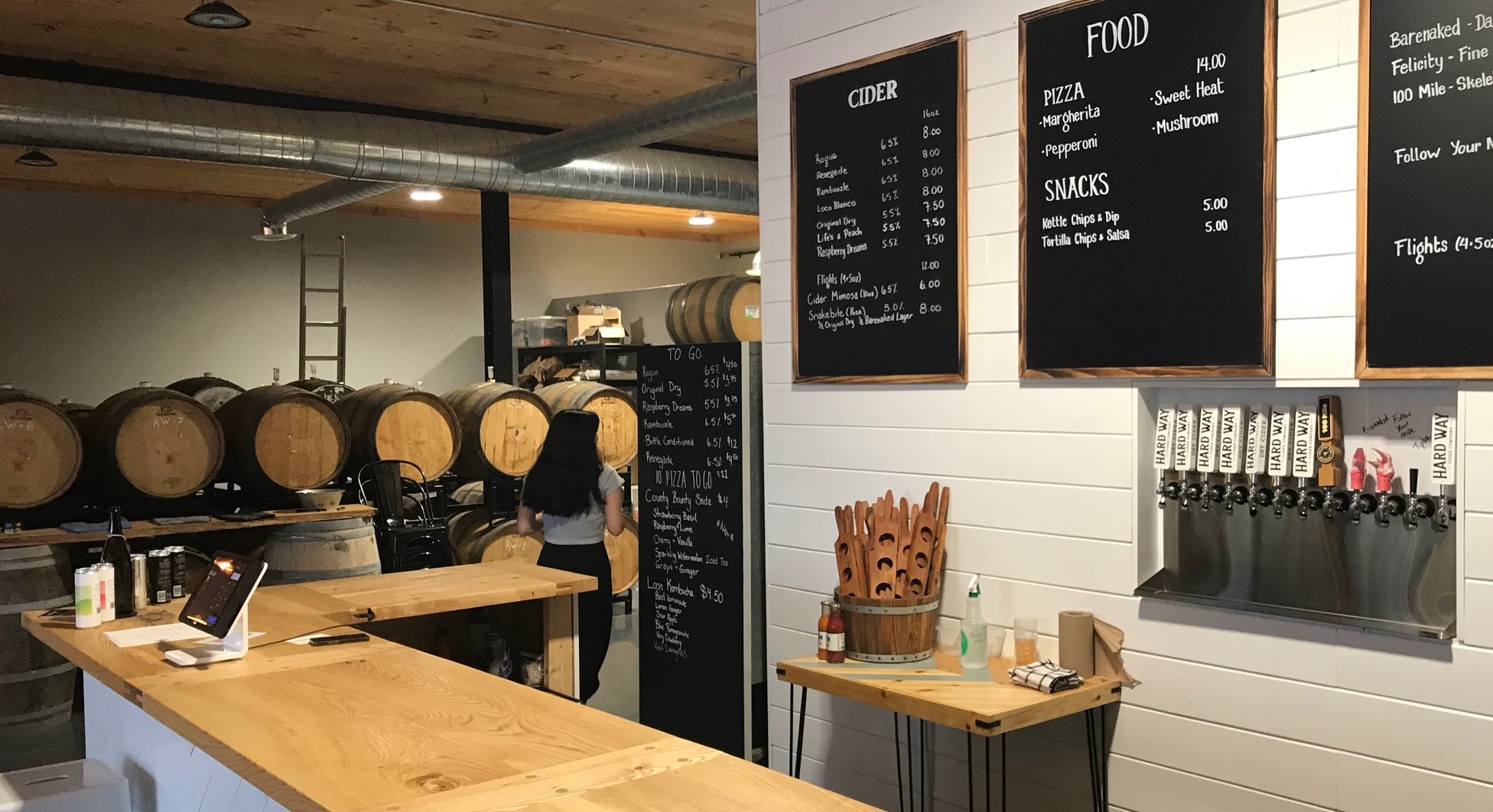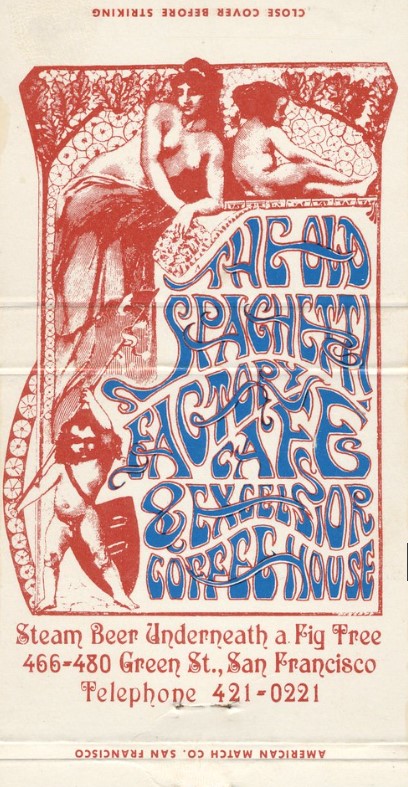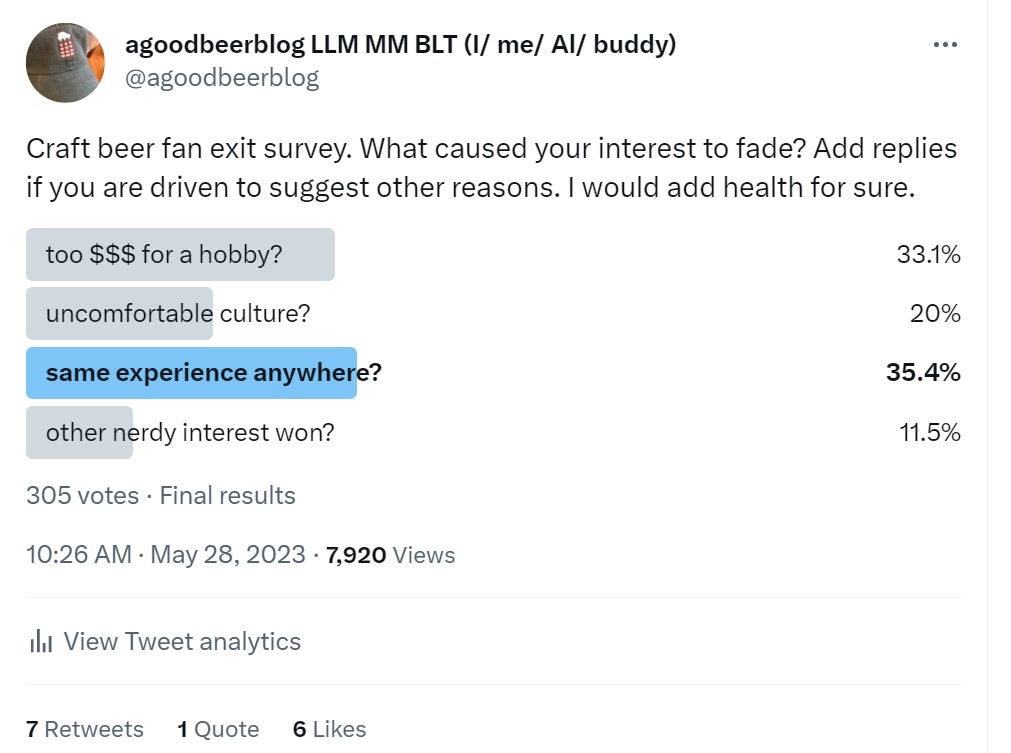 You know what is weird? I write these posts weekly but because of that my mind frames the passage of time in thirds of a month. So today is the eleventh which means we are in the second-third. Freaky, right? I can’t figure out if it slows or speeds the pace but with this messy weather week happy to have a sense of moving on. Even with a bracing feed* at No. 900 on Notre Dame the night before, as illustrated with the Habs looming in the background, I had a bit of another sort of moving experience getting back from Montreal where we bid bon voyage to the eldest who is now the blog’s Euro-correspondence for the winter. Maybe I’m just getting old but I don’t recall speed racers on the highway coming up from behind as I am passing and then passing me on the outside shoulder. In the slush and low visibility on the Ontario-Quebec border I actually had to hit the gas to given them enough space without hitting me as they performed their Grand Theft Auto XXIII fueled manouver. I clearly don’t know what it means to be cool these days.
You know what is weird? I write these posts weekly but because of that my mind frames the passage of time in thirds of a month. So today is the eleventh which means we are in the second-third. Freaky, right? I can’t figure out if it slows or speeds the pace but with this messy weather week happy to have a sense of moving on. Even with a bracing feed* at No. 900 on Notre Dame the night before, as illustrated with the Habs looming in the background, I had a bit of another sort of moving experience getting back from Montreal where we bid bon voyage to the eldest who is now the blog’s Euro-correspondence for the winter. Maybe I’m just getting old but I don’t recall speed racers on the highway coming up from behind as I am passing and then passing me on the outside shoulder. In the slush and low visibility on the Ontario-Quebec border I actually had to hit the gas to given them enough space without hitting me as they performed their Grand Theft Auto XXIII fueled manouver. I clearly don’t know what it means to be cool these days.
Where to begin? Talk of the town! Especially if your town toddles, the talk was was the price of a pint in one Chicago establishment, as noted in Paste magazine:
Well, the one really catching people’s eye does seem to jump off the page: $16 pints of many of the beers on tap, including not only DIPAs but a few single IPAs as well. Suffice to say, that was more than some of the local beer geeks could stomach, and the idea of a $16 pint immediately raised a plethora of questions. Why, for instance, does it seem that Other Half prices in Chicago are significantly higher than what the company charges for the same beers in its other taprooms in New York, Philadelphia and Washington D.C.?
As Paste wrote, the price in question was questioned by Chalonda White and got pretty swift response as noted by HopNotes himself:
The short-lived $16 pint thing at the Other Half/Ramova taproom was weird, and kudos to them for fixing it so quickly (those pints are now $8 and $9). Seems like that was rooted mostly in being a concert venue and thinking they could get away with airport/stadium pricing.
At the other end of the scale, ATJ posted an exploration of intoxication** as a concept on his newsletter:
It is perhaps the moment when your voice seems to become distant as if being spoken by someone else, though sometime during the next day we will hopefully feel patched, retreaded, and approved for the road, but you do wince at the behavioural altitude you reached.
Conversely, on the health beat as always The Mudge has been tracking the interesting angle on NA beer that has come into the news recently – that it’s got an issue with wee bit of the old switcheroo:
The annual Dry January campaign inevitably turns the spotlight on non-alcoholic beers, which in recent years have been the subject of a growing amount of publicity and hype. Obviously in terms of the specific objective of reducing alcohol consumption they have an undeniable advantage. Many people, though, have come to see them as being a healthy option in a wider sense. But does this belief really have any substance? A recent study has found that many of them in fact contain considerably more sugar than their normal-strength equivalents.
This is going along with another bit of recent news that there may be more than sugar to worry about in them there NA beers:
The experts investigated the survival of bacteria like E. coli O157:H7, Salmonella enterica, and Listeria monocytogenes under different conditions. They found that while L. monocytogenes eventually perished, E. coli and Salmonella could thrive for over two months, especially in non-alcoholic variants. These findings point to non-alcoholic beer as an especially conducive environment for pathogen growth, though bacteria managed to survive in both non-alcoholic and low-alcohol beers under various conditions. By contrast, regular beers, with higher ABV percentages, didn’t exhibit this vulnerability and are often safely stored at ambient temperatures in stores.
Yik. Or is it a “yikes!!”? The authors stressed the necessity of pasteurization along with the use of sterile filtration and preservatives might be prudent. Might be nice to confirm on the label, too. Also, The Times reported that Dry January may be triggering some price hikes:
The average price of nine brands, including Birra Moretti Zero and Guinness Draught 0.0, have increased by 22.3 per cent at Tesco, Sainsbury’s, Asda, Morrisons and Waitrose since the start of December, according to research by The Grocer magazine. The biggest single increase was at Waitrose, where bottles of Erdinger Alkoholfrei Wheat Beer increased 75 per cent from £1 to £1.75. At Sainsbury’s 12-packs of Heineken 0.0 jumped 64 per cent from £7 to £11.50. The trade magazine noted that the average price of low and no-alcohol beers had risen faster than full-strength beers over the past year despite not being subject to any duty increases.
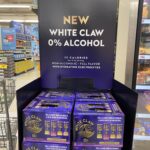 I do get most aspects of the NA thing being at least aimed at a generally healthier yet tasty (but, as illustrated, not always) outcome (even if I am very rarely going to participate given cheaper tasty options) but I really struggle with non-alcohol spirits and resulting cocktails. Pretty much spiritless by definition for me but you be you if that’s something you like. This was a handy if code-laden primer that passed by my eye this week:
I do get most aspects of the NA thing being at least aimed at a generally healthier yet tasty (but, as illustrated, not always) outcome (even if I am very rarely going to participate given cheaper tasty options) but I really struggle with non-alcohol spirits and resulting cocktails. Pretty much spiritless by definition for me but you be you if that’s something you like. This was a handy if code-laden primer that passed by my eye this week:
Long derided as “mocktails,” alcohol-free cocktails (aka NA, zero-proof, or spirit-free cocktails) are increasingly stepping into their own, driven by changing consumer behaviors, a surge in alcohol-free alternatives, and good old creativity. But what distinguishes a great NA cocktail from a run-of-the-mill soft drink? “There are plenty of nonalcoholic drinks—but why is tea or juice or soda alone not a nonalcoholic cocktail?” asks Derek Brown, a longtime bartender and bar owner in Washington, D.C… “It’s because a cocktail is something specific, and there are sensory characteristics we assign to it that are really important.”
Convinced? Important? Speaking of posi-comms, here’s a good example of potentially unnecessarily creep in the scoring of wines which, as with beer PR, actually may not assist some of the wines in question.
Excitement and quality abound, Canada saw its best Gold (95-96 points) performance to date at the 2023 competition – dry and sparkling wines carrying a mass of the nation’s 19 accolades in the category, with the provinces of Ontario, British Columbia and Nova Scotia represented. ‘These days, Canadian wines are getting a lot of attention,’ explained DWWA judge and Ontario native Andrea Pritzker MW. ‘There are some really excellent smaller regions, both in southern Ontario and of course British Columbia, that are really producing some phenomenal quality wines, white and red.’
Don’t get me wrong. There are many excellent Canadian wines and I am lucky to live near one of the primo regions – but how helpful is a “96” for a sparkler relatively speaking when this is the price of another with that same score? And, for present purposes, will good beer ever get anywhere near these sorts of relative value considerations?
And, speaking of wine, next time someone uses wine terminology like terroir to describe beer, here’s a handy primer from Eric Asimov of the NYT which explains the clearly distinct concept as well as a number of other things:
Jean and Pierre Gonon make the highly coveted Pierre Gonon wines in St.-Joseph, in the Northern Rhône Valley of France. Jean once explained to me the difference between Gonon’s St.-Joseph, made from an excellent terroir that requires arduous farming, and its Les Îles Feray, a wine from the easier-to-farm flatlands in the Ardèche. The Îles Feray tasted like syrah, he said, while the St.-Joseph, also made from syrah, tasted like the place in which it was grown. The wines provide different experiences for different occasions.
That’s terroir in a nutshell.
CNN has a story about a pub that surely must always get top marks from the customers:
At first glance, The Keys looks just like any other much-loved UK pub, with leather banquettes, rectangular wooden tables, and an ornately decorated carpet. But its décor boasts unique regal features, including a 16th century ceremonial ax and cabinets displaying Yeoman Warder uniforms. The pub is run by the Tower’s 35 serving Yeomen Warders, who get their “Beefeater” nickname from the daily meat ration they were traditionally given. Only they and their invited guests are allowed to enter. With lodgings for resident Beefeaters and their families, a doctor’s office and a chapel, the Tower can feel like a village for those living there. And like any proud village, the pub is an important part of the community – a place they can go to celebrate special occasions or unwind after a busy day.
I’ve bought a beer on a navy ship and walked into a pub built into a veterans’ hospital but sitting down for a pint there would be rather special.
Strangest boozy Scots law news of the new year: “Port Glasgow man acquitted after telling of cheese taunt.” We are assured that drinking was involved. As it so often is when the taunted with cheese defence is raised. The actual not at all strangest Scots boozy news is that BrewDog continues to refine its craft as little more than a personal money machine.
The better sort of beery news from a Scot is from Alistair who wrote about that big rauchbier revival… no, not now… that’s never happening. He wrote about the oen that could well have happened 115 years ago:
…smaller breweries in Bavaria were going back to malting their own grains because the cost of the raw materials was sufficiently low to make this economical again, rather than buying their malt from the likes of Weyermann, whose maltings is massive pile right next to the railway station in Bamberg. What jumped out most to me though was that the relative low cost of barley could lead to the return of “the old Bavarian smoked beer”. This raises the question then, did rauchbier die out in Bavaria in the latter 19th century and only revive when breweries starting taking back the ability to make their own malt…
Finally, two questions about forms of writing as illustrated by two unquestionably reliable sources. First, notice the structure of the paragraphs… call and response… lob and hit to the outfield. Not necessarily my favourite type of article but clearly open about what it is. Second, for Pellicle Matthew revisitied, rewrote and greatly unpacked a previously published piece according to the emailed newsletter:
…a Director’s Cut of sorts, a longer, more detailed version of Matthew Curtis’ erudite love letter to RedWillow Brewery. First published in a more curtailed form in SIBA’s “The Independent Brewer” industry magazine…
Also not fully compelling to me. But no one other than Jeff likely gets that interview. And no one other than Matthew should unpack that story even if it is a brewery bio, admittedly not my thing. (Or, as we saw before, perhaps should.) And both clear about what was happening. So… i say how they developed does not matter as each expands the whole of the written beery record. It is not like the old K-9 v. Turner and Hootch problem or anything. Or is it? Or is it the post holiday publication cycle reality? Or is it filling in info gaps?
Ponder that would you? And now, roll the credits… well, the credits, the stats the recommends and the footnotes. There is a lot going on down here and, remember, ye who read this far down, look to see if I have edited these closing credits and endnotes (as I always do), you can check out the many ways to find good reading about beer and similar stuff via any number of social media and other forms of comms connections. This week’s update on my emotional rankings? Facebook still in first (given especially as it is focused on my 300 closest friends and family) then we have BlueSky (up eight to 112) rising up to maybe… probably… likely pass Mastodon (911 – back up one) in value… then the seemingly doomed trashy Twex (4,434 – another week with a gain!) hovering somewhere above or around my largely ignored Instagram (creeping – literally – down to 164), with sorta unexpectly crap Threads (43) and not at all unexpectedly bad Substack Notes (1) really dragging up the rear – and that deservedly dormant Patreon presence of mine just sitting there. Stan’s take on it all?
I look at X once most days, which means I only see a sliver of what I might. Plenty of interesting people are still there, and I wish they’d move to Bluesky. I occasionally will retweet something to be polite, but I’m doing my best not to post
All in all I now have to admit my dispair for Mastodon in terms of beer chat and accept that BlueSky is the place in “the race to replace.” Even so and all in all, it is #Gardening Mastodon that still wins but here are a few of the folk there perhaps only waiting to discuss beer:
Alan McLeod | A Good Beer Blog (… me…)
Stan Hieronymus | The Man!
Boak & Bailey | The B² experience
Curmudgeon Ale Works | Jonathon is Brewing
Katie Mather | Shiny Biscuit and Corto
David Jesudason | “Desi Pubs” (2023) author
BeoirFest | They say “Let’s Talk Beer”
Ron Pattinson | The RonAlongAThon Himself
Al Reece AKA Velky Al | Fuggled
Jennifer Jordan | US hops historian
Andreas Krennmair | Vienna beer and lager historian
Beer Ladies Podcast | Lisa Grimm and colleagues
The Bar Towel | Toronto’s chat zone for beer lovers
Chicago Beer Society | Folk in Chicago getting social over beer
Jay Brooks | Brookston Beer Bulletin
Joe Stange | Belgian beer expert, beer magazine editor
Cider Bar | Barry makes Kertelreiter cider
Laura Hadland | CAMRA historian and beer writer
Brian Alberts | US beer historian
Jon Abernathy | The Beer Site
Maureen Ogle | US Beer Historian
Lars Garshol | Norwegian Beer Historian and Kveik Hunter
James Beeson | Beeson on Beer
Carla Jean | MAINER!!!
Thandi Guilherme | Beer Ladies Podcast Co-host
Lisa Grimm | Beer Ladies Podcast Co-host
Roy of Quare Swally | Beery ramblings from Northern Ireland
Rob Talksbeer | Podcaster and Youtuber
Anthony Gladman | UK Drinks Writer
Jeff Alworth | Manna Of Beervana
Northwest Beer Guide | Fairly self explanatory… but not NW Latvia…
Evan Rail | Prague based GBH editor, freelance writer, NYT etc.
Todd Alström | 50% of the Alströms
Jacob Berg | Beer talking librarian
And remember to check the blogs, newsletters and even podcasts (really? barely! This era’s 8-track tapes!) to stay on top of things including the proud and public and certainly more weekly recommendations in the New Year from Boak and Bailey every Saturday and Stan back at his spot for 2024 on Mondays. Look at me – I forgot to link to Lew’s podcast. Fixed. Get your emailed issue of Episodes of my Pub Life by this year’s model citizen David Jesudason on the odd Fridays. And Phil Mellows is at the BritishBeerBreaks. Once a month, Will Hawkes issues his London Beer City newsletter and do sign up for Katie’s now revitalised and wonderful newsletter, The Gulp, too. Ben’s Beer and Badword is back with all the sweary Mary he can think of! And check out the Atlantic Canada Beer Blog‘s weekly roundup. There is new reading at The Glass which is going back to being a blog in this weeks best medium as message news. Any more? Yes! Check to see the highly recommended Beer Ladies Podcast. That’s quite good. And the long standing Beervana podcast . There is the Boys Are From Märzen podcast too and Ontario’s own A Quick Beer. There is more from DaftAboutCraft‘s podcast, too. All About Beer has introduced a podcast… but also seems to be losing steam. And there’s also The Perfect Pour. Plus follow the venerable Full Pint podcast. And the Craft Beer Channel on Youtube and remember BeerEdge, too, and The Moon Under Water… if you have $10 a month for this sort of thing… I don’t. Pete Brown’s costs a fifth of that. There was also the Beer O’clock Show but that was gone after a ten year run but returned renewed and here is the link!
*Unfrikkin’ believably good! That little black pan behind the pizza is creamy polenta with gorgonzola and a spicy sausage all as a dip. Servied with little herby cheesy buns. Twelve bucks but everyone scraped their pizza crusts through it. Fabulous addition.
**Not in the legal sense. This is a bit of an exploration of that around these parts: “Canadian law recognizes three degrees of intoxication for the purposes of the intoxication defence. Mild intoxication, if raised, might be useful for attempting to mitigate the severity of the offence but has no bearing on the mens rea intent needed for a conviction. Advanced intoxication can be used for specific intent offences to raise reasonable doubt about the mens rea. Even when successfully used as a defence, offenders are often found guilty on lesser charges. For example, if successfully used to secure an acquittal on murder charges, offenders are typically found guilty of manslaughter, a general intent offence that cannot consider the intoxication defence. Extreme intoxication refers to intoxication that puts an offender in a state of automatism in which they are lacking self-control and self-knowledge. When successfully used as an affirmative defence, it effectively negates the mens rea intent and renders a conviction impossible. While Section 33.1 of the Criminal Code had dictated that this intoxication defence could only be applied to non-violent offences, that requirement was nullified by the recent Supreme Court decision.“






